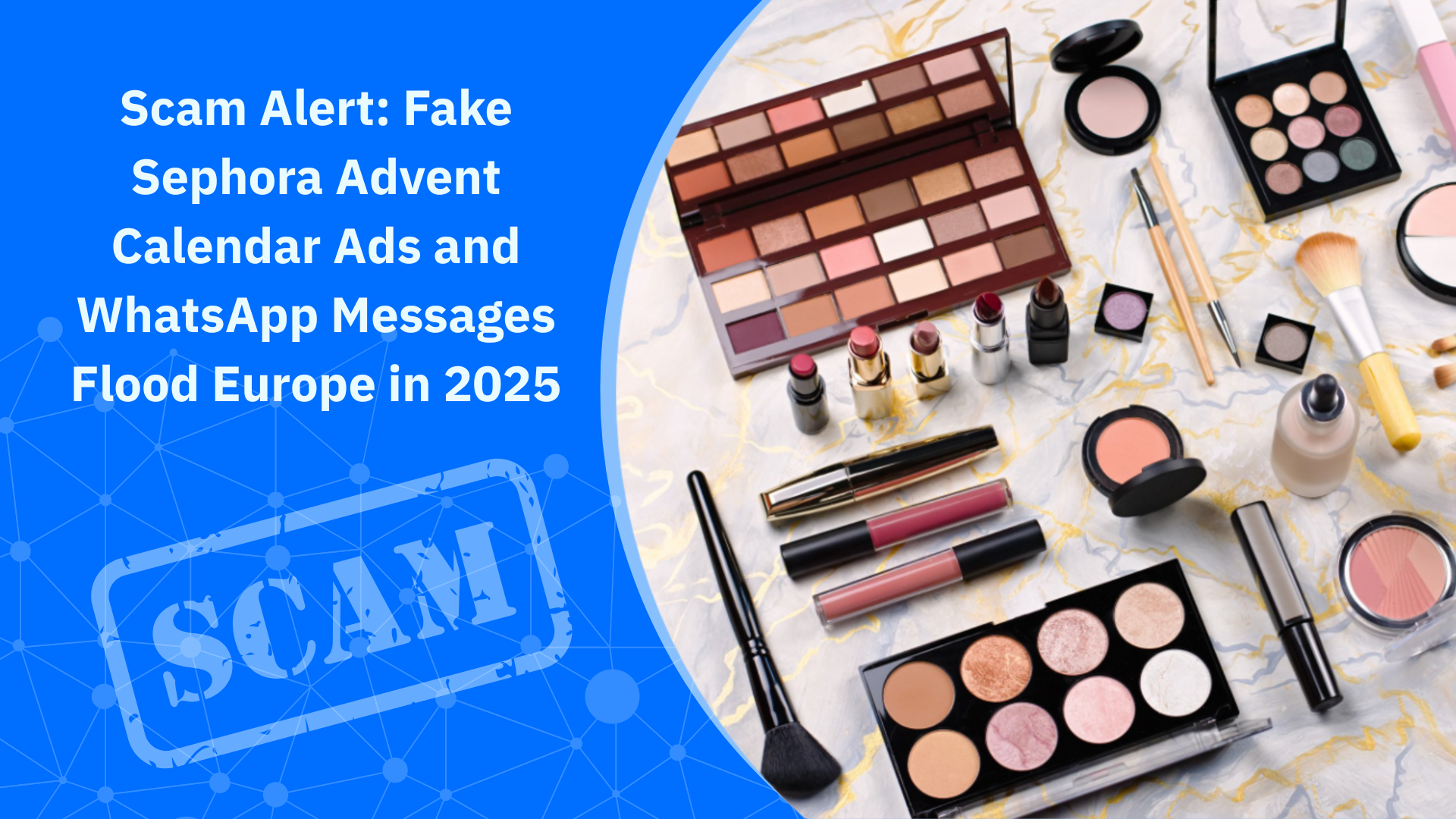Deepfakes Are the New Bullying. How to Protect Your Daughter from Online Abuse

Whether she's sharing selfies with her friends or building her future online, your daughter is growing up in a very different world than the one you knew. The internet offers her freedom, connection, and creativity—but it also exposes her to new and deeply personal risks.
One of the most troubling is the rise of deepfakes. These are fake images, videos, or even audio recordings created using artificial intelligence to mimic someone's appearance or voice. While deepfakes can be used in harmless ways, a large and growing number are created to embarrass, intimidate, or exploit. And in most cases, it's women and girls who are targeted.
Explicit deepfakes are becoming a new form of bullying—one that's harder to spot and even harder to stop. According to recent research by Girlguiding*, more than 1 in 4 young people aged 13 to 18 (26%) say they've seen am explicit deepfake of someone they know: a celebrity, a friend, a teacher—or even themselves. That's not something a teenager should ever have to face.
But deepfakes are just one part of the picture. Online harassment, in general, is a widespread problem, and young girls are particularly exposed.
In Girlguiding's 2024 Girls' Attitudes Survey*, which asked over 2,500 girls aged 7 to 21 about their experiences online, 77% said they'd experienced some form of online harm in the past year. These included cyberstalking, threats, unwanted explicit images, and misogynistic content.
Some of the findings are especially hard to read:
- 1 in 8 girls aged 13–18 said they've received threats online.
- 32% of girls in that same age group said online abuse made them feel like they couldn't tell a parent or carer.
- 34% felt unsafe, and 24% avoided showing their face online as a result.
- In the youngest age group, over 1 in 5 girls aged 7–10 reported seeing rude images online—a figure that has doubled since 2021.
- Half of girls and young women aged 11-21 want online platforms to remove harmful content to make them feel safer online.
Many girls say the constant exposure to harmful content is not just upsetting—it changes how they behave and feel.
When asked about how the online harms they've experienced make them feel or react, girls aged 13-18 said:
- 32% felt unable to tell a parent or carer
- 34% felt unsafe
- 24% didn't want to show their face online
- 15% wanted to miss school
- 11% stopped seeing friends or going out
The sad truth is that online abuse doesn't always look like threats or name-calling. It can be subtle, anonymous, and built into the platforms young people use every day. For today's girls, this is the new reality—and for parents, it's time to act.
What Parents Can Do to Protect Their Daughters
No parent wants to imagine their daughter being targeted online, but ignoring the problem doesn't make it go away. What matters most is being present, paying attention, and giving her the tools to deal with what's out there. With the right approach, you can help her feel safer, better informed, and more confident in protecting herself.
Here are key ways to support her—practically and emotionally—when facing the risks of online abuse, including deepfakes.
1. Start with an honest conversation
The first and most powerful thing you can do is talk.
Let her know that no matter what happens online, you're someone she can turn to. She might feel embarrassed or unsure how you'll react, especially if the abuse involves images or explicit/adult content. So, it's important to keep your tone open, supportive, and calm.
You can say:
- "There's a lot going on online that we didn't have to deal with when we were your age. I just want to make sure you feel safe."
- "If anything ever makes you uncomfortable or scared online, you can always come to me. No blame, no judgment."
- "Have you ever heard about deepfakes? They're becoming more common and can be really harmful. If you ever see anything like that—or worry someone's using your photos—we'll handle it together."
Related: How to Talk AI and Deepfakes with Children
2. Review privacy settings together
Many girls have public social media accounts without realizing how much information is visible to strangers. Instead of telling her what to do, sit down and explore the settings together.
Help her:
- Set her accounts to "private" so only approved people can follow her or see her posts.
- Hide her friend's list, birthday, location, and tagged photos.
- Turn off facial recognition or auto-tagging features.
- Disable location sharing in apps like Snapchat or Instagram Stories.
Encourage her to regularly review her followers and remove people she doesn't know well. Even one fake account could be quietly collecting photos or screenshots to use later.
Related: Kids Using Secret Decoy Apps: What Parents Need to Know About the Dangers
3. Be mindful of what you post about her
Sometimes, it's not the teen but the parent unknowingly oversharing. Childhood photos, full names, school info, or even birthday messages with a tag can become part of her digital footprint.
Before posting about her online, ask: "Would she be okay with this now—and in five years?"
Respecting her privacy sets an example and helps protect her from unwanted attention.
4. Help her remove personal info from public sites
Many people don't realize their phone number, address, or relatives' names can show up on people search websites. These sites collect public records and make it easy for stalkers or harassers to find someone offline.
Help your daughter:
- Google her full name and see what comes up.
- If her personal details appear on people-search platforms, go to those sites and request removal (they often have opt-out pages).
- Use a data removal service that can automate this process and monitor for new listings. This is especially helpful if you want long-term protection without doing it manually every few months.
Even if she's not posting much online, removing this info can make it harder for strangers to track her down or misuse her identity.
5. Set healthy boundaries around tech use
While you can't control every message or image she sees, you can help her set digital boundaries to protect her mental health.
Support her in:
- Taking breaks from social media when it gets overwhelming
- Not checking DMs or comments late at night, when abuse tends to feel more intense
- Unfollowing or blocking accounts that make her feel unsafe, judged, or pressured
- Using the "restrict" feature on platforms like Instagram, which limits someone's interaction without notifying them
Blocking can sometimes lead to more drama at school, so the 'restrict' feature offers a quieter option.
Related: Teach Your Kid How to Stand Up to a Bully: 7 Powerful Ways
6. Equip her devices with built-in protection
Conversations and healthy habits are important—but they're not always enough. Technology can also act as a strong safety net, quietly blocking threats before they ever reach your daughter's screen.
A comprehensive cybersecurity solution like Bitdefender Premium Security can protect every device in your household, including your daughter's phone, tablet, or laptop. It runs in the background, keeping her safer without disrupting her daily use.
With the Parental Control feature, you can:
- Filter harmful websites and block inappropriate content
- Set internet time limits and build healthy routines
- Stay informed (without spying) about how she uses her device
With Digital Identity Protection, Bitdefender keeps watch for any leaks or misuse of her personal data—like if her email, photos, or account info end up on the dark web or exposed in a breach.
This kind of protection is especially helpful if your daughter is sharing more online, applying to school or jobs, or simply exploring the internet independently. It gives both of you peace of mind, knowing there's a safety net in place.
7. Encourage critical thinking about AI, images, and consent
Many young people still struggle to tell whether an image is real or AI-generated. Some don't understand how fast a fake photo can spread—or how damaging it can be.
Help her think critically:
- "Would you be okay with this being shared publicly?"
- "Does this image seem altered or out of place?"
- "Do you feel pressure to post something you're not comfortable with?"
Show her how to reverse-image search a photo or check metadata. These small skills can give her more control—and reduce fear.
And most importantly, remind her: it's never her fault if someone misuses her images or targets her online. The blame lies with the person who causes harm—not with the girl who simply exists online.
tags
Author
Cristina Popov is a Denmark-based content creator and small business owner who has been writing for Bitdefender since 2017, making cybersecurity feel more human and less overwhelming.
View all postsRight now Top posts
Genshin Impact Scam Alert: The Most Common Tricks Used Against Players
December 05, 2025
How Kids Get Automatically Added Into WhatsApp Groups with Horrific Imagery Without Consent
November 24, 2025
Scammers Exploit Hype Around Starbucks Bearista Cup to Steal Data and Money, Bitdefender Antispam Lab Warns
November 18, 2025
Scam Alert: Fake Sephora Advent Calendar Ads and WhatsApp Messages Flood Europe in 2025
November 17, 2025
FOLLOW US ON SOCIAL MEDIA
You might also like
Bookmarks









